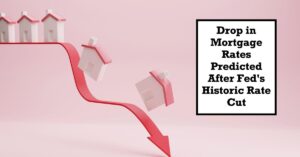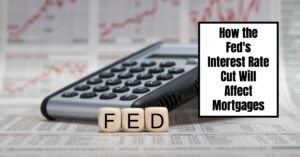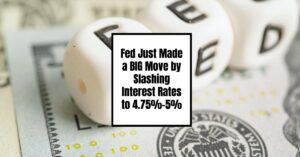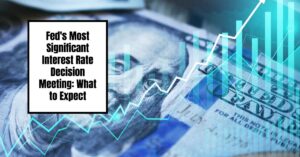Imagine a world where buying your dream home doesn’t seem like an uphill battle, where the idea of owning property isn't a far-off fantasy but an attainable goal. Well, lower mortgages are on the horizon as the Fed has slashed rates, making that dream closer to reality. This significant financial news is making waves in the housing market, with potential buyers and homeowners alike watching the changes closely.
Drop in Mortgage Rates Predicted After Fed's Historic Rate Cut
Key Takeaways
- Fed's Rate Cut: The Federal Reserve has implemented its first interest rate cut in four years, dropping rates from 5.3% to approximately 4.8%.
- Mortgage Rates Decline: Mortgage rates for the average 30-year fixed loan have fallen to 6.2%, down from 7.2% in May.
- Increased Purchasing Power: Buyers now have around $70,000 more purchasing power for the same monthly payment compared to earlier in 2023.
- Market Activity: Experts expect an increase in home inventory as homeowners feel encouraged to sell.
- Future Outlook: Additional rate cuts may continue through 2025, helping to keep mortgage rates low.
Understanding the Fed's Decision
The Federal Reserve's recent decision to slash interest rates marks a pivotal moment in the economy. After battling high inflation for two years, the Fed announced a half-point rate cut, the first of its kind since March 2020. This decision was driven by a shifting focus: now, instead of just combating inflation, the Fed is keen on preventing a recession and major job losses. The effective benchmark rate now sits between 4.75% to 5%, a significant decrease from the two-decade high of 5.3%.
This type of aggressive reduction in interest rates signals that the Fed believes the worst of inflation has passed. Market analysts had anticipated a more conservative quarter-point reduction, but the Fed surprised everyone with a larger cut, indicating a strong desire to stimulate the economy. As a result, borrowing costs for both consumers and businesses will decrease, leading to more affordable mortgages.
The Impact on Mortgage Rates
While mortgage rates do not move in lockstep with the federal funds rate, they are heavily influenced by changes in the economy and investor expectations. As of recent reports, the average rate for a 30-year fixed mortgage has already fallen to 6.2%, down from 7.2% in May and a staggering 7.9% last October — a stark reminder of how interest rates can impact housing costs. These changes mean that a buyer could now secure a home with a significant savings compared to just a few months ago.
Freddie Mac, a top source of mortgage information, reported these figures. With monthly mortgage payments pulling back from a peak of $2,440 to about $2,100, potential buyers are finding new breathing room. The decreased interest rates equate to approximately $70,000 more in buying power for the same monthly payment, giving buyers in markets like California even more leverage to make a move.
Shift in Homebuyer Activity
Despite these promising numbers, one might wonder why home sales have not seen a drastic uptick. Danielle Hale, the Chief Economist at Realtor.com, noted that while lower mortgage rates are a relief and have improved homebuyer purchasing power, the market still has its challenges. Sales remain somewhat sluggish, with potential buyers remaining cautious.
However, this dip in activity could change with the evolving landscape. Lower mortgage rates may prompt homeowners who have been “locked in” with lower rates from previous years to reconsider selling their homes. Increased inventory would be good news for buyers who have struggled with the tight housing market, characterized by record-high prices and a lack of available properties.
Economic Conditions and Future Rate Cuts
As the Fed continues to signal its intentions for future rate cuts, expectations loom large. Many experts, including Lawrence Yun, Chief Economist for the National Association of Realtors, believe that further cuts are already anticipated in the housing market. Yun suggests that this could lead to more attention on homebuyer demand and a subsequent increase in supply, creating an environment ripe for steady home prices across many local markets.
Fed Chair Jerome Powell has hinted at the need to remain vigilant while navigating economic uncertainties. He emphasized that the ability to predict mortgage rates accurately hinges on how the economy develops over time, mentioning that rising economic uncertainty typically makes consumers wary about such significant purchases.
Market analysts anticipate a transition to smaller, quarter-point cuts moving forward, especially if no drastic downturns in the economy occur. The balanced approach might signify that the Fed recognizes the risks to both the labor market and overall economic health, carefully guiding their next moves to ensure stability.
Conclusion
The recent decision by the Federal Reserve to implement lower rates is pushing the doors of homeownership a little wider for many Americans. While mortgage rates are lower and buying power has noticeably increased, the overall housing market will take time to respond fully to these shifts. The potential of further cuts combined with softened demands could lead to a more accessible housing market for those looking to buy.
With vigilance and care from the Fed, the horizon looks promising for many looking to transition from renting to owning. As markets adapt to these changes, potential homebuyers should keep an eye on upcoming developments, as they might finally find that dream home sooner than they expected.
Also Read:
- Fed Just Made a BIG Move by Slashing Interest Rates to 4.75%-5%
- How the Fed's Big Interest Rate Cut Will Affect Mortgages
- Market Reactions: How Investors Should Prepare for Interest Rate Cut
- How Low Will Interest Rates Go in 2024?
- Interest Rate Predictions for the Next 3 Years: (2024-2026)
- Interest Rate Predictions for Next 2 Years: Expert Forecast
- Impact of Interest Rate Cut on Mortgages, Car Loans, and Your Wallet
- Interest Rate Predictions for Next 10 Years: Long-Term Outlook
- When is the Next Fed Meeting on Interest Rates in 2024?
- Interest Rate Cuts: Citi vs. JP Morgan – Who is Right on Predictions?
- More Predictions Point Towards Higher for Longer Interest Rates











